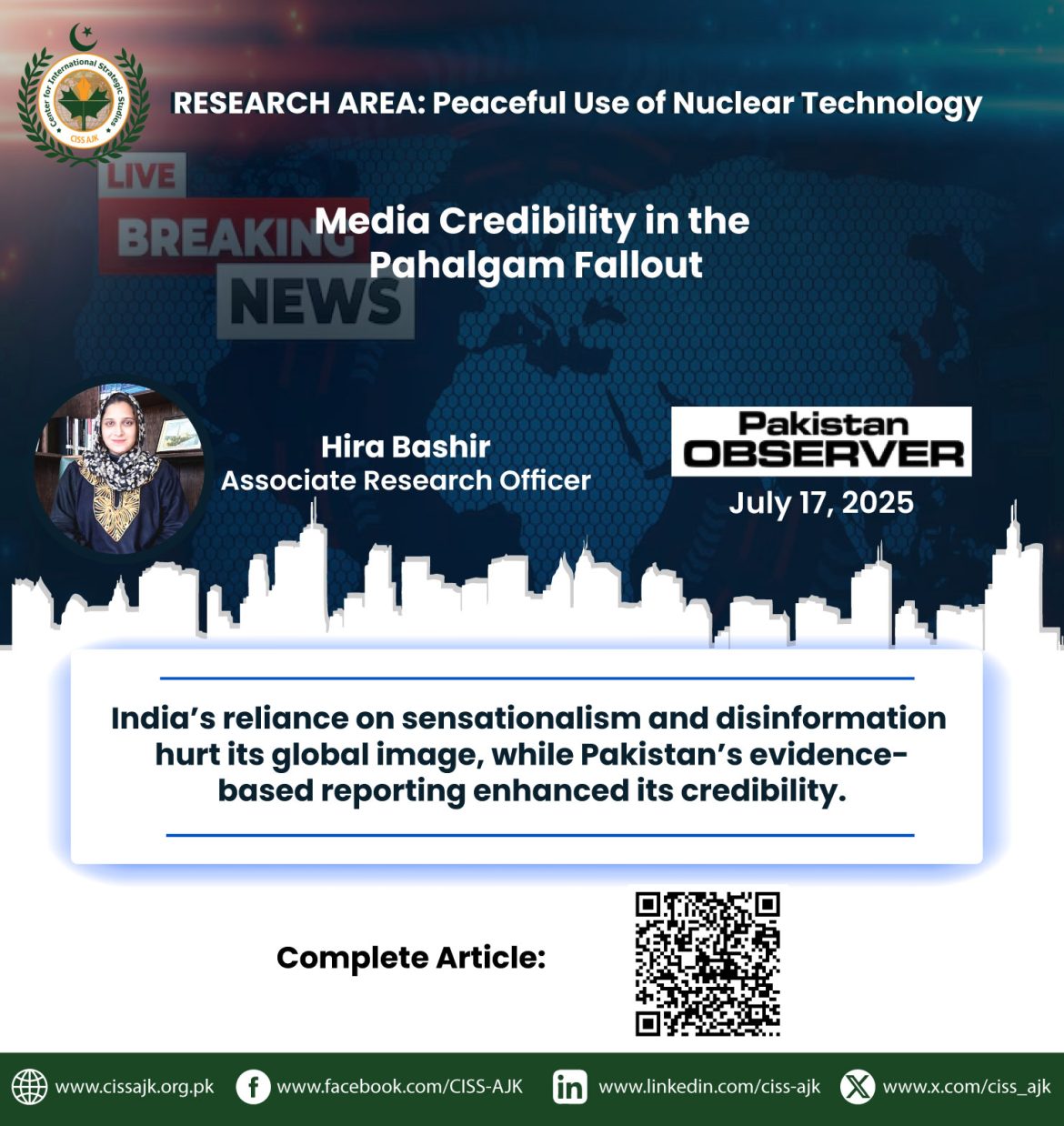THE Pahalgam attack on 22 April 2025 significantly altered the India-Pakistan conflict, highlighting the media’s role as a battleground.
How can media narratives influence national identities and global perceptions during times of crisis? This op-ed discusses how media coverage plays a crucial role in shaping how conflicts both within countries and internationally. In modern warfare, the media is not just an observer; it actively shapes perceptions, influences public opinion, and alters the course of events. Both India and Pakistan sought to control the narrative following the attack, understanding that media credibility would define their positions globally.
Pakistani media adapted a fact-based approach, using official statements, radar images, and crash site photos to support its coverage. This strategy helped establish Pakistan’s media as credible and trustworthy. Conversely, Indian media spread sensational, often unverified claims, such as fabricated reports of attacks on Karachi, nuclear facility leaks, and the arrest of Pakistan’s Army Chief. These claims were quickly debunked by international media and fact-checkers, undermining India’s media credibility.
Pakistani media’s factual reporting, backed by military briefings, this developed confidence within citizens and promoted confidence, pride, and unity. On social media, Pakistanis actively fact-checked and mocked false Indian claims with memes in Pakistan’s media. While Indian media channels like Zee News and Aaj Tak continued spreading unsubstantiated claims. The use of old footage, such as Gaza war videos passed off as Karachi explosions, damaged India’s media and led to public embarrassment.
The contrast in media strategies shaped international perceptions. Global outlets like CNN, The New York Times, and TRT World endorsed Pakistan’s narrative, recognizing it as credible. Meanwhile, fact-checkers like BOOM and Reuters debunked Indian claims, further damaging India’s media reputation. The international community largely sided with Pakistan, which gained a stronger position in the information sphere. Pakistan’s evidence-based communication became the more credible source, enhancing its global trustworthiness. Within India, public support for the media quickly eroded as falsehoods became apparent. Social media influencers, like Nitish Rajput, criticized the media’s credibility. Pakistan maintained its narrative of calm, factual reporting, gaining confidence from both its citizens and international observers.
India’s reliance on sensationalism and disinformation hurt its global image, while Pakistan’s evidence-based reporting enhanced its credibility. This stark contrast shows the power of the media in shaping public opinion and international relations during conflicts. Misinformation can have lasting consequences and can badly impact the importance of truth and transparency in media coverage.
In conclusion, the Pahalgam attack highlighted the vital role of the media in modern conflicts. Pakistan’s media maintained credibility through accurate reporting, while India’s reliance on sensationalism and false narratives severely damaged its reputation. The international endorsement of Pakistan’s narrative further cemented its position as the more reliable actor in this ongoing conflict, underscoring the significance of reliable, evidence-based journalism in safeguarding national and international reputations.
—The writer is Associate Research Officer at CISS AJK.
(hirakhan5090@gmail.com)



